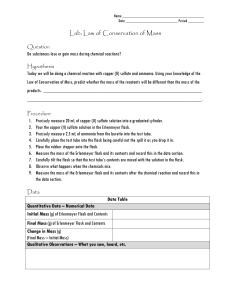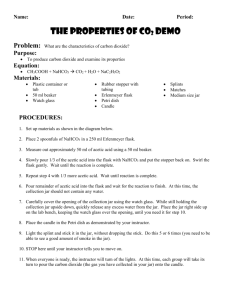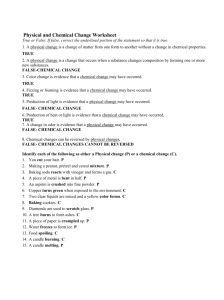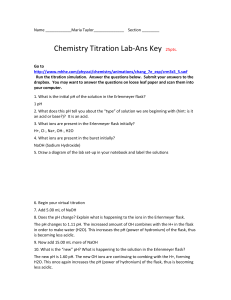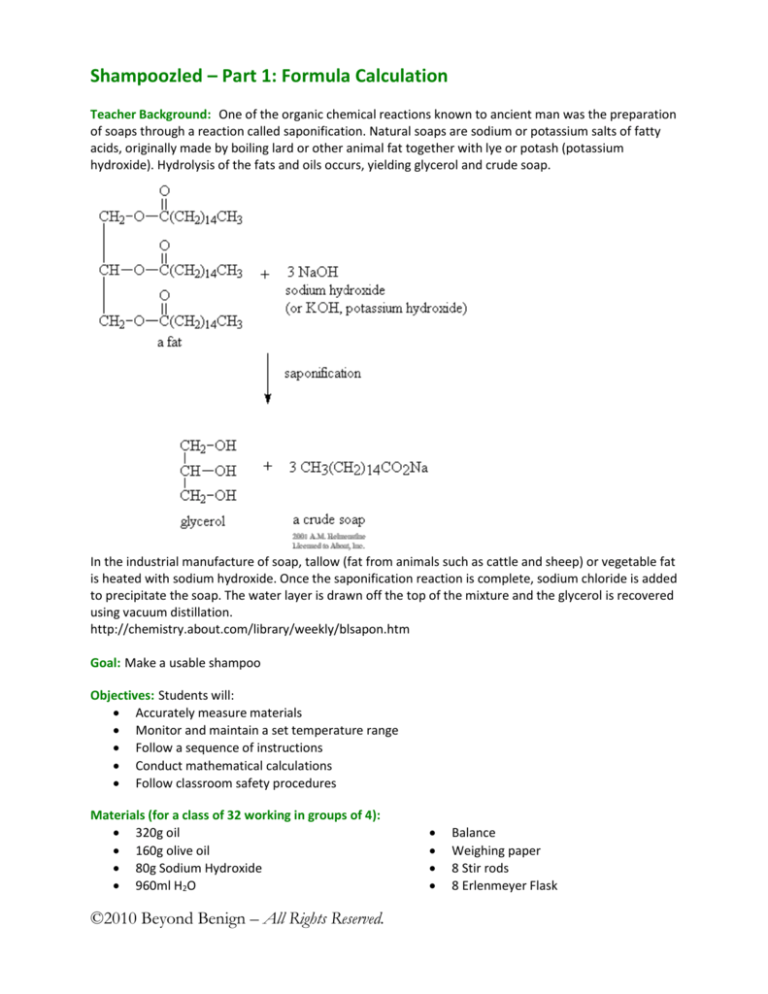
Shampoozled – Part 1: Formula Calculation
Teacher Background: One of the organic chemical reactions known to ancient man was the preparation
of soaps through a reaction called saponification. Natural soaps are sodium or potassium salts of fatty
acids, originally made by boiling lard or other animal fat together with lye or potash (potassium
hydroxide). Hydrolysis of the fats and oils occurs, yielding glycerol and crude soap.
In the industrial manufacture of soap, tallow (fat from animals such as cattle and sheep) or vegetable fat
is heated with sodium hydroxide. Once the saponification reaction is complete, sodium chloride is added
to precipitate the soap. The water layer is drawn off the top of the mixture and the glycerol is recovered
using vacuum distillation.
http://chemistry.about.com/library/weekly/blsapon.htm
Goal: Make a usable shampoo
Objectives: Students will:
Accurately measure materials
Monitor and maintain a set temperature range
Follow a sequence of instructions
Conduct mathematical calculations
Follow classroom safety procedures
Materials (for a class of 32 working in groups of 4):
320g oil
160g olive oil
80g Sodium Hydroxide
960ml H2O
©2010 Beyond Benign – All Rights Reserved.
Balance
Weighing paper
8 Stir rods
8 Erlenmeyer Flask
8 glass jars with lids (like a 250 ml
mason jar)
24 plastic cups
8 graduated cylinders (50 ml)
8 warm water baths (hot plate with
brownie pan)
8 room temperature water baths (cup
or glassware with water)
16 thermometers (at least 8 glass!)
8 copies of Formula Calculation Student
Sheet
Time Required: 45–60 minute class period
Prescribed Focus Area:
4.2 the nature and practice of science
4.3 the applications and uses of science
Green Chemistry Principles Addressed:
Real-time Analysis for Pollution Prevention
Procedure:
PREP: Students will be making a large batch of shampoo and storing it in class. Determine where you’d
like students to store their shampoo.
Pour distilled water into 8 cups
Pour olive oil into 8 cups
Pour vegetable oil into 8 cups
IN CLASS
Explain to students that they will be creating their first part of their shampoo, the soap.
Hand out the student sheets.
Review the lab instructions, reminding them of the components of soap (lye and fat).
Students should follow the directions on the lab sheet and clean up as directed.
Assessment:
Successful completion of shampoo
Following lab and safety procedures
*thanks to Judith Jones from Mason Middle School for sharing her ideas to improve this process!
©2010 Beyond Benign – All Rights Reserved.
Shampoozled Part 1: Formula Calculation - Student Sheet
1. Get a pair of safety glasses and gloves for each member of the group & put both on
2. One member of your group should obtain your lab materials:
1 glass jar with lid
Plastic cups of water, olive oil &
vegetable oil
graduated cylinder
Erlenmeyer flask
balance
spatula
1 sheet of weighing paper
2 thermometers (one glass)
1 Stir stick
paper towels
cool water bath (cup or glassware
with water in it)
Complete the following steps:
1. Using the graduated cylinder, measure 22 ml of water. Pour it into the Erlenmeyer Flask
2. Using the balance, spatula and weighing paper, find 9 g of NaOH
3. Slowly transfer the NaOH to the Erlenmeyer flask containing the H2O
4. Carefully swirl the Erlenmeyer flask to mix the two together
5. Hold the Erlenmeyer flask in the room temperature water bath.
6. Use a glass thermometer to monitor the temperature of the sodium hydroxide solution
7. Using the graduated cylinder, measure 30 ml of vegetable oil and pour into glass jar
8. Using graduated cylinder, measure 14 ml of olive oil and add to vegetable oil in glass jar
9. Place beaker in warm water bath. Monitor constantly until substance is in the 35-37o C range
10. When both mixtures are in the 35-37o C range, stir the sodium hydroxide solution into the oils
11. Put lid on glass jar. Make sure the lid is on as tight as possible!
12. Shake the mixture vigorously for at least 15 minutes.
13. Clean up according to teacher instructions.
©2010 Beyond Benign – All Rights Reserved.
Table for quick reference
Ingredient
Amount
Olive oil
14 ml
Vegetable oil
30 ml
Water
22 ml
NaOH
9g


